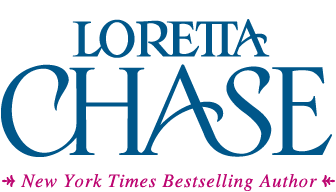Because readers seem to be very interested in the posts about locales and vehicles mentioned in Lord of Scoundrels*, I'm continuing the visual guide.
Athcourt, where Lord Dain resided, is on the fringes of Dartmoor. It’s based, however, on Hardwick Hall, which is in Derbyshire. But there are moors there, too, and Hardwick Hall certainly is atmospheric. I chose it because it looked like the sort of place Dain would have grown up in and because I had a picture of it in cross-section—so helpful in seeing the movie in one’s head. Since a great deal of action takes place in this house, the cross-section was invaluable.
You can see a black and white version of the cross section here.
The National Trust publication about Hardwick Hall includes a cross section in color, as well as many interior views, including the Long Gallery, down which Dominick runs au naturel. Below is a Victorian pseudo-Elizabethan view of the gallery, but it hasn't changed much.
*Yes, still celebrating the book’s 20th anniversary.
Images: North View of Hardwick Hall, Derbyshire and
Interior View of the Hall at Hardwick, by John Buckler (1813), courtesy Yale Center for British Art, Paul Mellon Collection. Gallery image from The Mansions of England in the Olden Time, Vol 2, 1870 - See more at:




